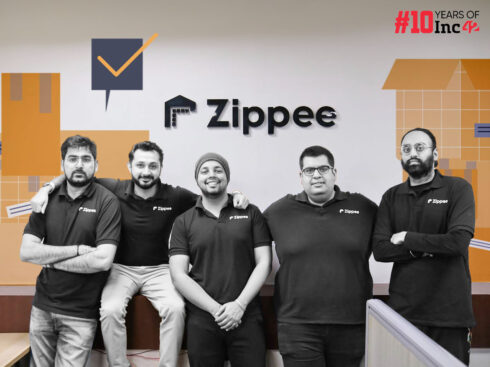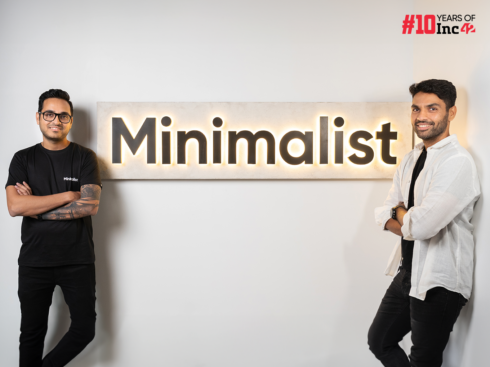In late 2011, NYU student Hursh Agrawal and Princeton student Josh Miller each took a leave of absence from their universities and teamed up with Cemre Güngör to build a company called Roundtable.
The trio bootstrapped the company from New York City for four months, eventually moving to San Francisco in early 2012 to build the product with guidance from investors. In May of that same year the company — now called Branch — returned to New York City to empower people to talk about the world around them.
“[Josh and I] were working on [Branch] for about a month and we got some traction out of two conversations,” co-founder Hursh Agrawal explains. “Then [we] decided to drop out of school (i.e. take a leave of absence) so we could keep working on it. A few months after that we met Cemre (who would soon become our co-founder and lead designer).”
Today Branch (formerly Roundtable) aims to deliver a new brand and venue of high quality public discourse. Curated groups of people are invited to engage around issues on the online platform and bring “the intimacy of a dinner table conversation to the openness of the Internet.” The founders believe it is a necessary departure from the monologues we have grown so accustomed to reading online.

The trio’s gamble appears to have paid off. To-date the company has received $2M in seed funding and works with publishers, like USA Today (for March Madness) and PBS to change the future of online conversations.
Learn how Hursh Agrawal and Josh Miller’s affinity for intellectual debate inspired the creation of Branch and why Agrawal believes persistence is essential for success.
| Company: | Branch |
| Founders: | Hursh Agrawal, Josh Miller, Cemre Güngör |
| Location: | New York City, NY |
| Industry: | Consumer Web |
| Startup Year: | 2011 |
| Startup Costs: | Undisclosed |
How We Got Started
Josh, my Co-founder, and I really had this hankering for debate and discussion. I also like panel discussions; I really enjoy going to them and watching them. So when we got together, we tried to figure out why it didn’t exist online.
We spent a few weeks prototyping and thinking; not only “What would it look like online?” But also “What would an interesting conversation with interesting people look like online?”
Would it create good content?

These kinds of conversations exist in email and in chat rooms, but they’re not available for anybody to see. So, that was our original idea.
We initially invited 5-10 interesting CEOs, or designers, and had them hold online events and participate in these conversations. We saw that it produced an interesting concept; they really liked seeing the conversation and people liked reading it.
That was our initial idea and we kept iterating from there, making it more of a consumer platform so anybody could start their own conversation.
I’m a developer and I was in school for Computer Science; so I built most of the initial prototype for the site… Josh was really into product and how people interact with each other, so he was more naturally suited for a product role while I helped develop the product. Cemre is a phenomenal designer so having him on board helped push the product further and made it look amazing.
Best Success Story
We’ve raised money, which is awesome. We’ve built a phenomenal team thus far which is (I think) a definite success; not all teams can stay that.
A lot of publishers [are using Branch]. USA Today used it for March Madness. PBS, for example, invited some Obama biographers during the election to chat about Obama’s family tree. It was a really interesting conversation [to watch] unfold… Publishers are really into using [Branch] as a way to create content for their editors. And so they’ll invite you know two or three or five of their editors and they’ll just have a conversation on there to create content.
In some ways we still have a lot left to prove. We have a product that has traction, but making it more accessible and making it more refined, and making it more sticky will take time … [There is] a lot left to do.
Biggest Startup Challenge
“You have to build this ‘thing’ that you believe is cool and interesting and is going to bring something to the world, but convincing other people … is another challenge entirely.”
[vimeo link=”http://vimeo.com/47334795″ width=”590″ height=”350″]
Initially, the challenge is figuring out whether the product has merit and value; how we can build it into something bigger. You have to build this “thing” that you believe is cool and interesting and is going to bring something to the world, but convincing other people and investors and people to sign on as users, press, whatever; is another challenge entirely.
Building a platform like this, from my end, was interesting too, because I didn’t have much experience building these kinds of computer platforms. So it has been a learning experience.
And as we started building a team, I think building a company and building a team has been a challenge, not only from a hiring perspective, but keeping communication alive and making sure everybody is satisfied and growing and building a good company culture.
I don’t think our challenges are any different from any other company. It has been an interesting ride.
#1 Tip for Entrepreneurs
First is persistence – stay at it… There was this great quote I heard Chris Dixon (Investor at Andreessen Horowitz, Partner and Co-founder of Founder Collective) say, “No intelligent person I’ve ever met has not succeeded eventually.”
All it takes is persistence. You try the first time, you try again. A lot of what I’ve been learning is straight out of experience and persistence. People are just persistent in what they do, and they succeed that way.
Another thing I’m learning slowly is how much time management is a huge part of being proactive. I encourage people to brush up on those skills, because coming from college I was a notorious procrastinator. I think trying to figure out how to get some time management techniques would be helpful, too.
Connect with Hursh on Twitter.


























